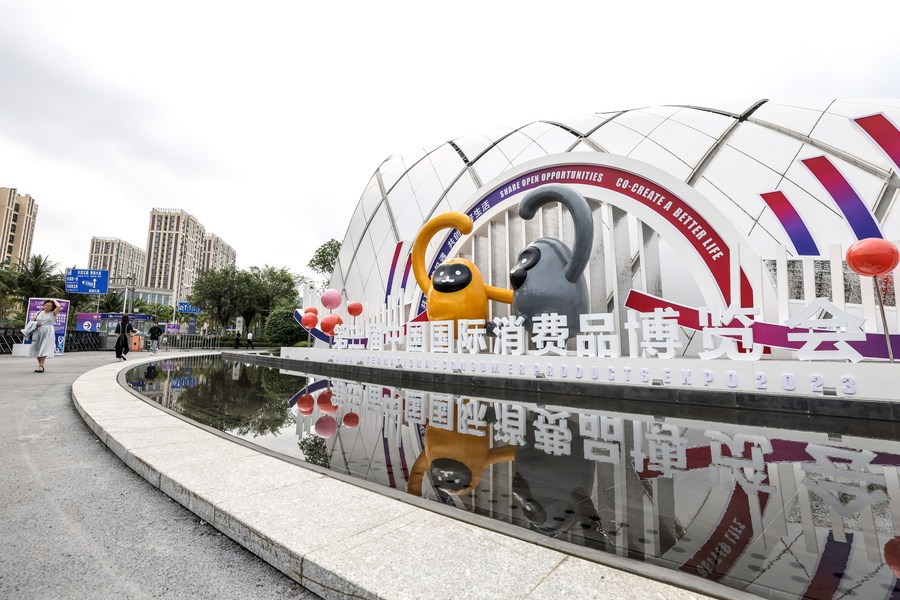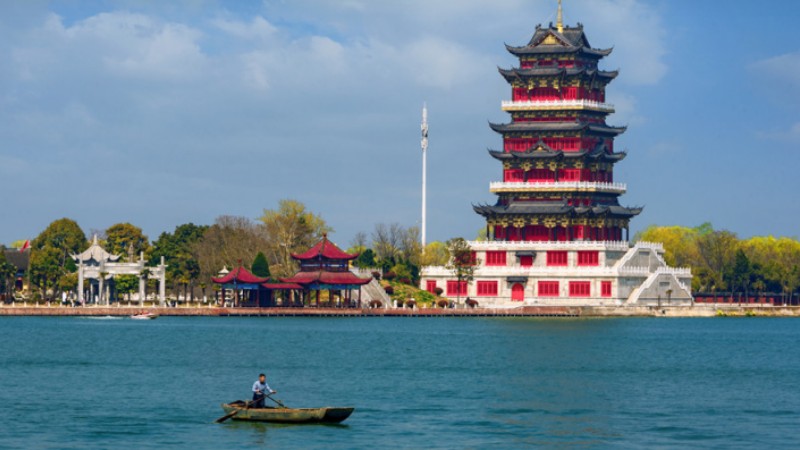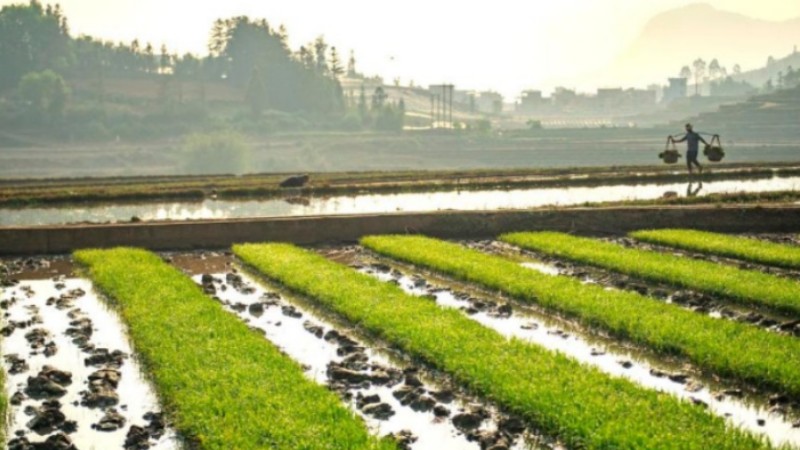Understanding Xi's quotes on high-standard opening up

This photo taken on April 10, 2023 shows a view outside the venue of the third China International Consumer Products Expo (CICPE) in Haikou, capital city of south China's Hainan Province. (Xinhua/Zhang Liyun)
China's policy of reform and opening up will remain unchanged over the long term.
—Chinese President Xi Jinping
April 13, 2023
while inspecting Guangdong Province
Xi also stressed the importance of remaining steadfast in comprehensively deepening reform and expanding high-standard opening up.
Previous mentions of high-standard opening up
Previously, Xi had elaborated on high-standard opening up on multiple occasions.
At this year's Two Sessions, Xi said:
We should, in accordance with the requirements of building a high-standard socialist market economy and promoting high-standard opening up, deepen reform in key areas, make coordinated efforts to put in place a modern infrastructure system and a high-standard market system, and steadily expand institutional opening up.
We must solidly promote high-level opening up, not only making good use of the global market and resources to develop ourselves, but also promoting common development of the world.
In a congratulatory message to the first China International Consumer Products Expo in 2021, Xi said:
China is ready to give play to the advantages brought by the Hainan free trade port in comprehensively deepening reforms and putting up the highest-level opening-up policies on a trial basis.
Measures of high-standard opening up
Xi noted, in his report to the 20th CPC National Congress, that in order to promote high-standard opening up, China will
leverage the strengths of China's enormous market, attract global resources and production factors with our strong domestic economy, and amplify the interplay between domestic and international markets and resources.
steadily expand institutional opening up with regard to rules, regulations, management, and standards.
make appropriate reductions to the negative list for foreign investment, protect the rights and interests of foreign investors in accordance with the law, and foster a world-class business environment that is market-oriented, law-based, and internationalized.
better plan regional opening up, consolidate the leading position of eastern coastal areas in opening up, and more widely open the central, western, and northeastern regions.
promote the internationalization of the RMB in an orderly way, deeply involve ourselves in the global industrial division of labor and cooperation, and endeavor to preserve the diversity and stability of the international economic landscape and economic and trade relations.
Chinese market opportunities
China has made solid progress in opening up wider to the world.
According to this year's government work report, over the past five years,
China's imports and exports were kept stable, and their quality was improved.
China developed new forms of foreign trade, built 152 new integrated pilot zones for cross-border e-commerce, and supported the establishment of overseas warehouses. The overall tariff level fell from 9.8 percent to 7.4 percent.
China advanced trials for innovative development of trade in services across the board and adopted the negative list for cross-border trade in services.
China took proactive and effective moves to utilize foreign investment. A total of 21 pilot free trade zones have been established in China, and steady strides have been made in the development of Hainan Free Trade Port.
Six free trade agreements were newly concluded or upgraded; and the share of trade with China's free trade partners increased from 26 percent to around 35 percent of China's total trade volume.
What China brings to the world
Contribution to world economy: As the world's second-largest economy with over 1.4 billion people, China, through wider opening up, has embraced others with an ultra-large consumer market and consistent resolve to boost common development for all, thus injecting confidence and certainty into the global economy.
- The International Monetary Fund (IMF) projected on April 11 that China's economy will grow 5.2 percent in 2023 and 4.5 percent in 2024. Given the size of the Chinese economy, that would be a key contributor to global growth in the coming year, IMF official said.
Shared opportunities: Beijing has been committed to promoting global and regional free trade.
- The Regional Comprehensive Economic Partnership (RCEP) trade pact, which officially entered into force in 2022, is to date the world's largest free trade agreement with 15 signatory countries.
- Data from the Chinese Ministry of Commerce (MOC) showed that China's trade with the other RCEP signatories expanded 7.5 percent year on year to 12.95 trillion yuan (1.88 trillion U.S. dollars) in 2022, accounting for 30.8 percent of China's total foreign trade value.
- The Belt and Road Initiative (BRI) proposed by Xi in 2013 has also played a large part in this aspect. It has become one of the most popular international platforms for global cooperation.
- In the past decade, China has signed more than 200 BRI cooperation documents with 151 countries and 32 international organizations, according to official data.
Easier market access: Under the policy of high-standard opening up, China has issued a series of measures to level the playing field, so that foreign companies can enjoy better business environment in the country.
- In 2022, China renewed the Catalogue of Industries Encouraged for Foreign Investment, which implemented provisional import tax rates lower than that of the most-favored nations for 1,020 commodities, and further reduced the most-favored-nation tariff rates for 62 IT products.
- China is also actively seeking to continuously lower the threshold and reduce the costs and risks associated with foreign investment. Items on the negative lists nationwide and for pilot free trade zones, which took effect in January 2022, have been cut to 31 and 27, down 6.1 percent and 10 percent, respectively.
- China has established various platforms to reach overseas companies, such as the China International Import Expo (CIIE), the China International Consumer Products Expo (CICPE), and the China International Fair for Trade in Services.
- The third CICPE is underway in south China's Hainan Province. This year's expo has attracted over 3,300 brands from 65 countries and regions. For enterprises globally, the expo has provided a springboard to enter the Chinese market, giving a much-needed boost to COVID-dented global business confidence.
Photos
Related Stories
- Xi calls for further reform, opening up to drive Chinese modernization in Guangdong
- Lychee industry brings wealth to villagers in Guangdong
- China won’t tread path of Western modernization, which features polarization, plunder: Xi
- Key role seen for Guangdong
- Xi stresses deepening reform, expanding opening up, advancing Chinese modernization
Copyright © 2023 People's Daily Online. All Rights Reserved.









